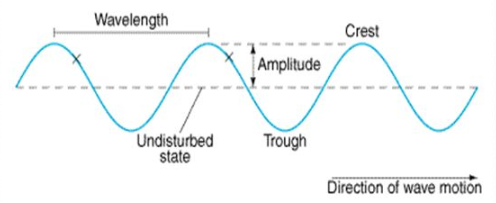The wave is a disturbance moving along the medium from one point to another. By observing the ocean waves, it can be analyzed that the crest is moving from one location to another over the given period. The crest is observed to cover the distance. The speed of the object is referred to as how fast the object is moving and usually, it is expressed as the distance traveled per unit time. In the case of the waves, speed is the distance that is traveled by the given point on the wave, in the given time interval.
Wave speed can be determined by multiplying the wavelength and times frequency.
![]()
![]()
All waves traveling through the same medium do so at the same speed.

Factors Affecting the Speed of Wave Motion
If the crest of the ocean wave, travels a distance of the 20 meters in the 10 seconds, then the speed of this ocean wave is 2 m/s. If the wave travels fast, in the same amount of time, when it is moving slow. The speed of the elastic wave is significantly dependent on the properties of the medium through which it is traveling. The medium could be liquid, solid, or gas. All of the media are characterized by their physical properties such as density, mass, temperature, and elasticity. The speed of the propagation of the wave is affected by any kind of alternation in the properties of the medium. For example, by increasing the tension of the spring, the speed of the wave passing through it is also increased.
How the Movement Happens
The speed of the wave is related to its frequency and wavelength. The image in the diagram below shows a transverse wave on the string and four-string particles have been drawn as colored dots. The particles are displaced by the moving of the wave in the right direction. The particles 1 and 2 have been displaced upward whereas the particle 3 and 4 are at their position. The next moving particle will be particle 3, as the section of the string immediate to its left will cause its pulling in the upward direction.

By this figure, it can be concluded that the speed at which the particle is moving to the right direction, is dependent on that how quickly, one of the particles of the string is accelerated in the upward direction, in response to the force of the net pulling that is exerted by the adjacent neighbors. According to the second law of Newton, the stronger net force causes greater acceleration, and thus the wave moves faster. However, the ability of the particle to exert the pull on its neighbors is dependent on how tight is the stretching of the string.